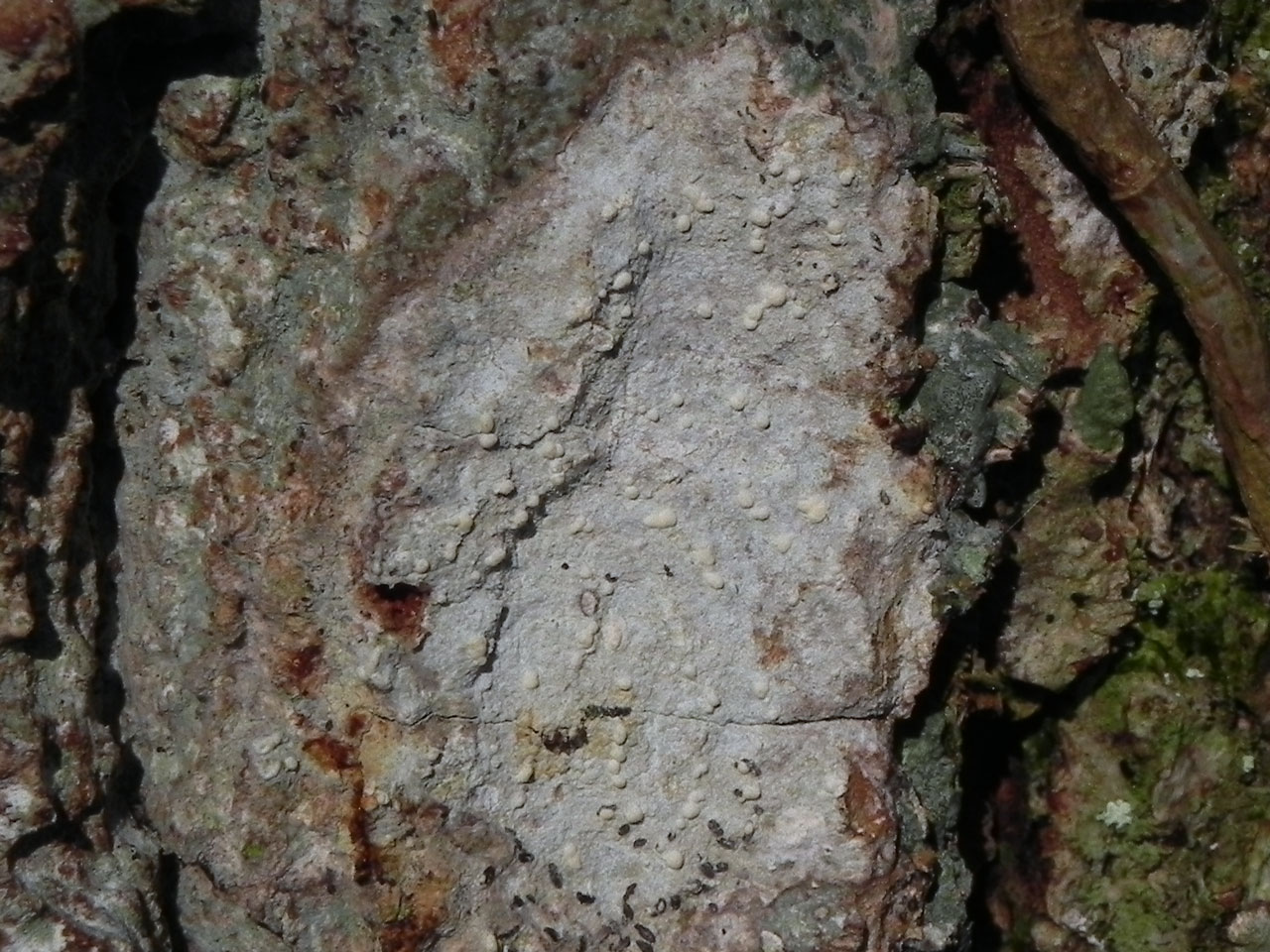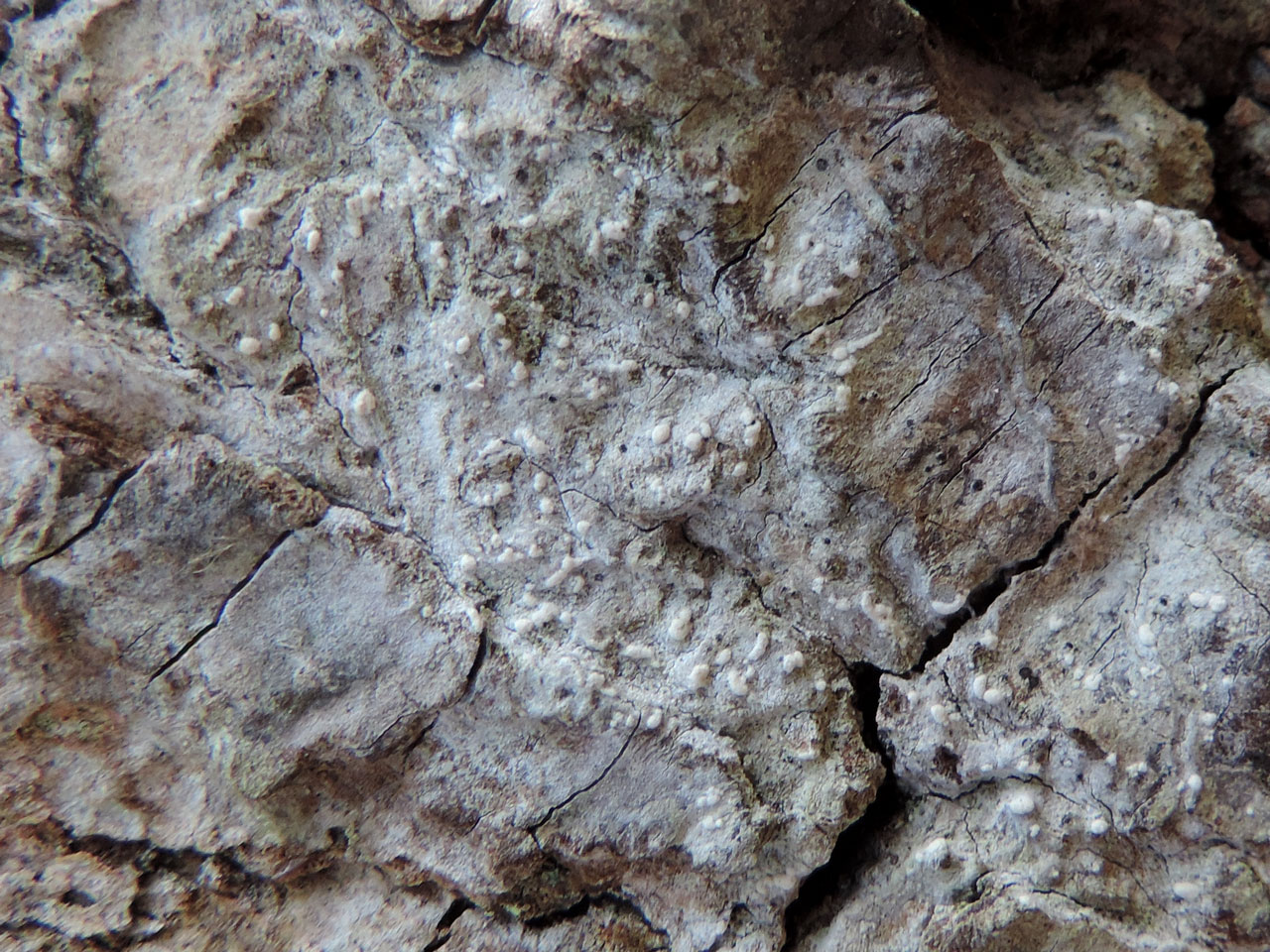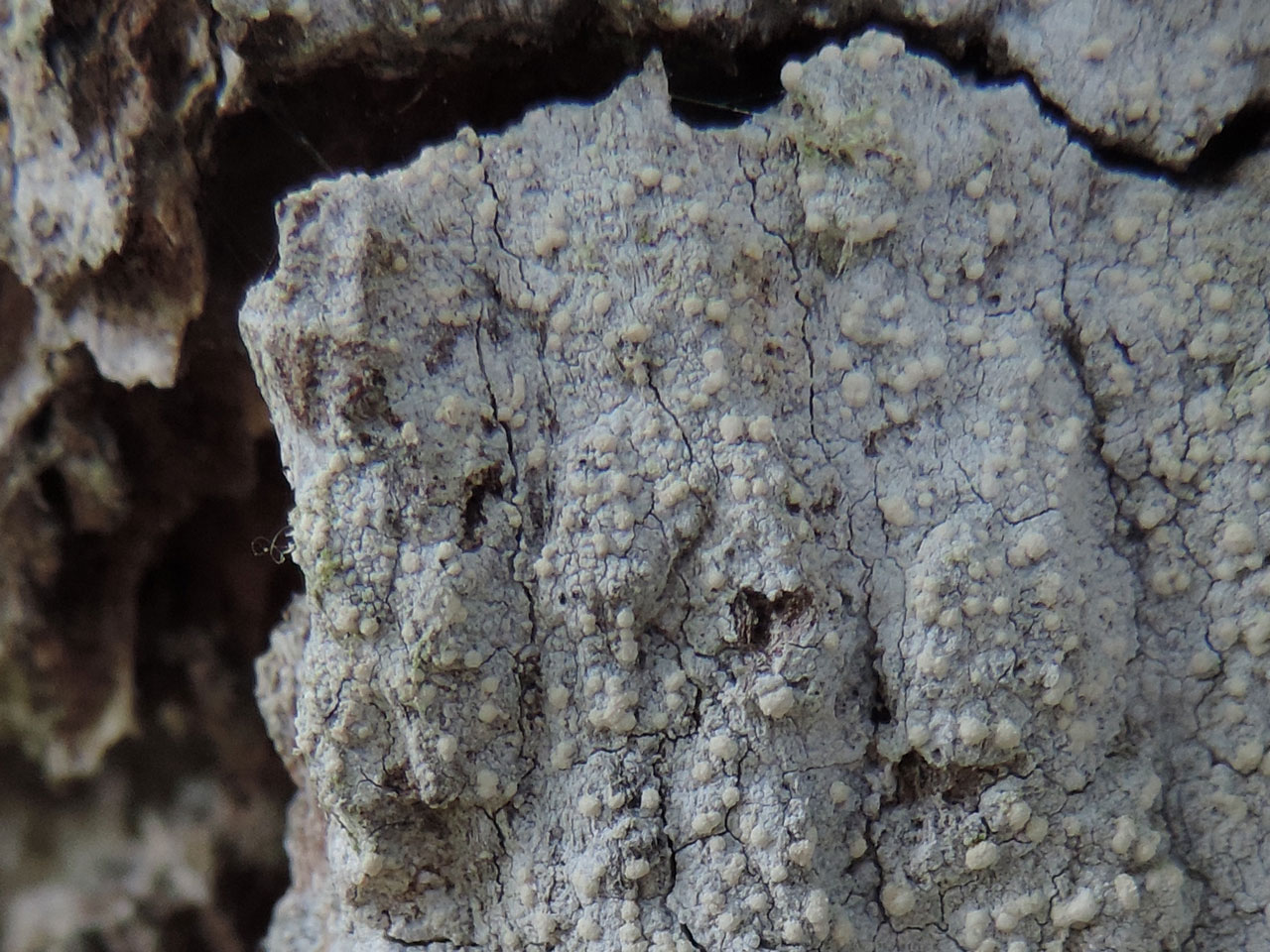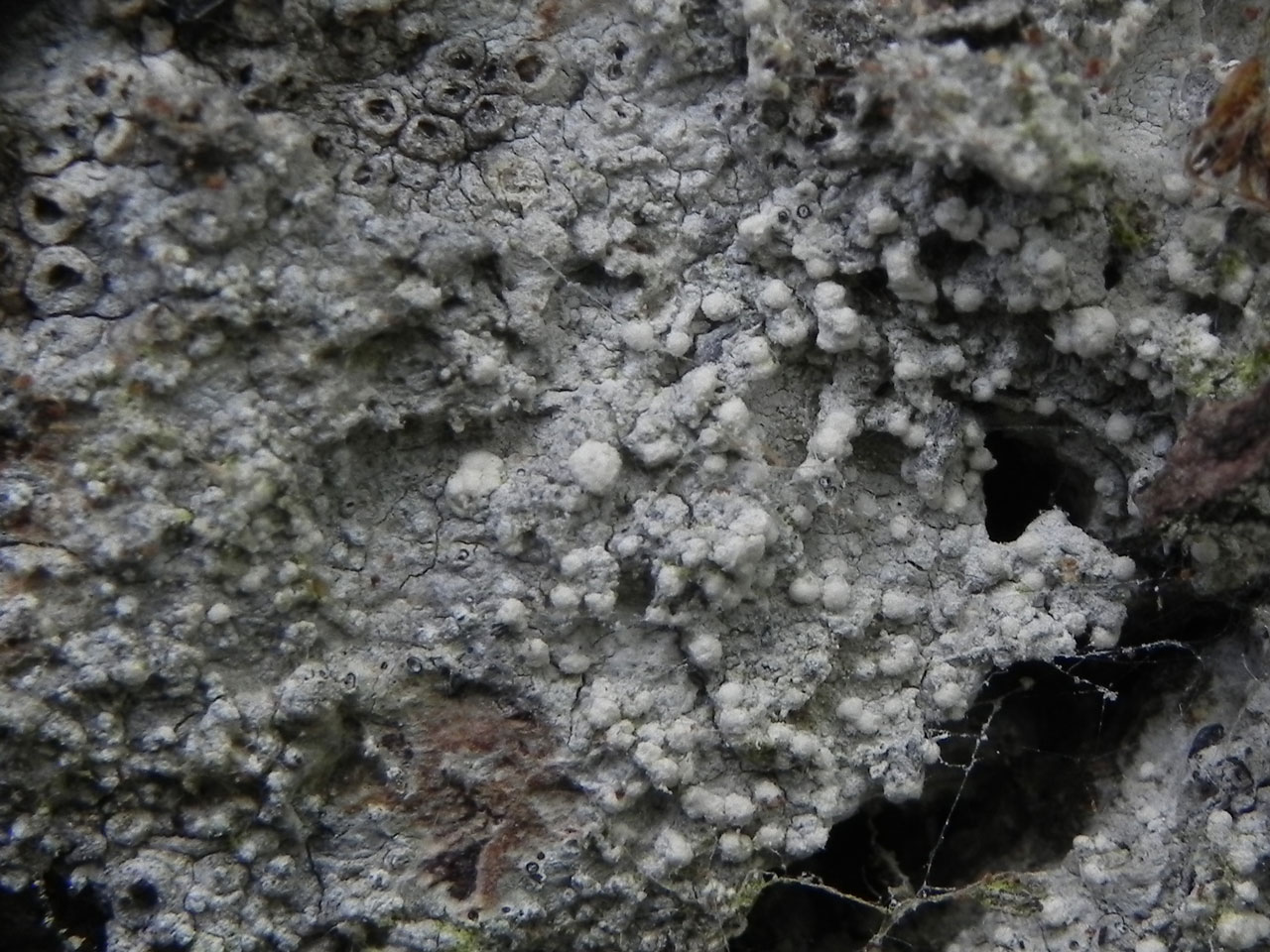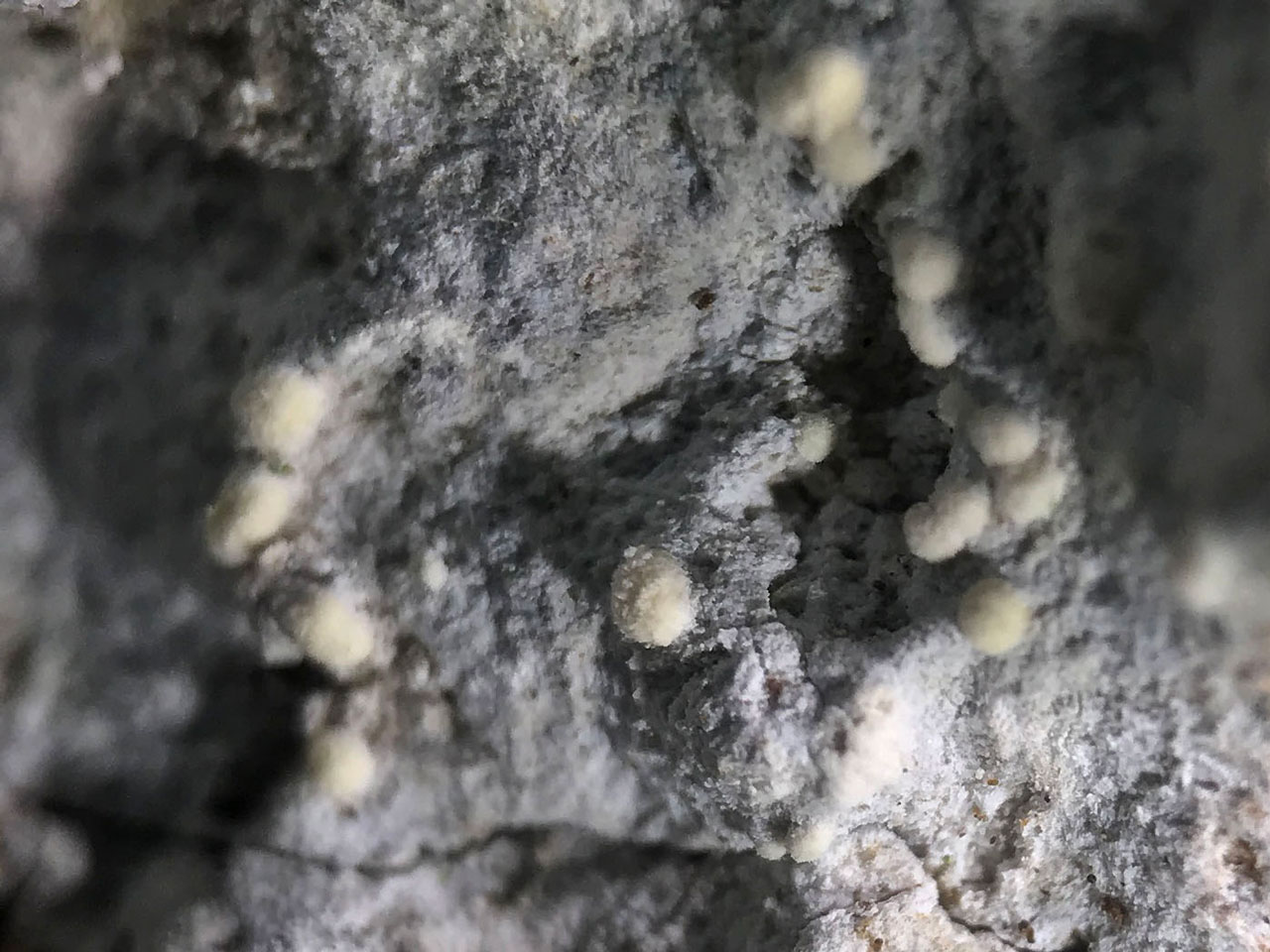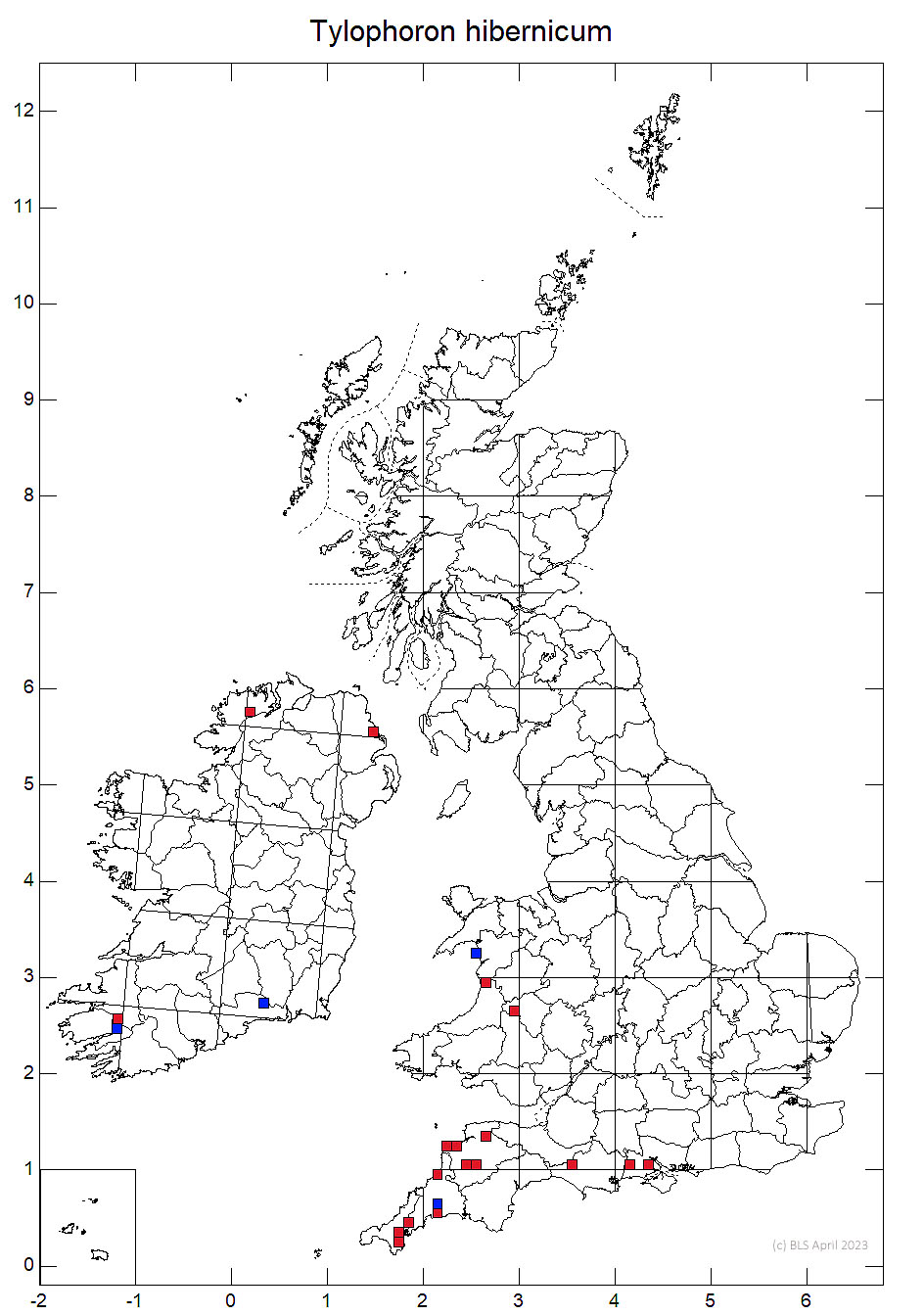A remarkable lichen that starts life as a hyphomycetous lichenicolous fungus, overgrowing a variety of trentepohlioid containing lichens belonging to the Arthoniales in dry bark habitats, mainly on old trees in ancient woodlands. The parasite apparently takes over their photobionts, finally becoming independent and forming discrete thalli. The lichen is sterile in Britain and Ireland, but forms mounded pale creamy yellow sporodochia, which resemble soralia, and react C+ strong red colour (fleeting). A widespread tropical species, which is rare and south western in these Isles.
Thallus crustose, ecorticate, pale rose or pinkish, fading to white in dried collections, effuse, thin, soft and cotton-like, often encrusted with crystals (dissolving in C), the margin delimited by brownish arachnoid-fasciculate threads radiating outwards over the host thallus which is killed in advance of the hyphal threads; hyphae 1.5–2 μm diam.; photobiont trentepohlioid; cells arranged in filaments or separating, invested by hyphae of the fungus without penetration of the protoplast. Ascomata rare (only found in material from Hawaii and the Galapagos Is); sessile, short-cylindrical to conical, 0·5–1 mm diam., 0·4–0·6 mm high (excluding the mass of ascospores); thalline margin well-developed, 50–60 μm wide, of colourless hyphae 1·5–2 μm diam. densely inspersed with minute colourless crystals dissolving in K; true exciple of dark brown hyphae; mazaedium well- developed, black; paraphyses branched, anastomosing, 1·5 μm diam.; asci dissolving at an early stage, cylindrical, with eight uniseriate ascospores, 35–45 × 4–5 μm; ascospores 1-septate, dark brown, with a heavily pigmented band around the central part, ellipsoidal, sometimes constricted at the septum, occasionally with slightly pointed ends, wall thick, (9–) 10·5–13·5 (–17) × (5·5–) 6·5–8·0 (–9) μm. Conidiomata sporodochia, 0.3– 0.6 (–1) mm diam., convex-hemispherical to subglobose, scattered or in small groups, pale creamy yellow, fading and concolorous with the thallus in dried material, often forming over old apothecia or pycnidia of the host; conidiogenous cells 2–3 μm diam., terminal or lateral; conidia forming in acropetal chains, 8–13 × 3–4.5 μm, bacilliform, mostly 1-septate, apices rounded or truncate, guttulate, with wrinkled walls. Thallus and sporodochia C± red (fleeting), K–, KC± red, Pd–, UV+ glaucous (lecanoric acid).
A highly distinctive species, only really confusable in the field with fertile morphs of Lecanactis abietina with heavily pruinose, yellowish convex discs. In T. hibernicum the sporodochia, which resemble soralia, react C+ strong red colour (fleeting) whereas the apothecia of L. abietina are C–. Previously reported as also containing schizopeltic acid by TLC but this was probably due to contamination from the underlying host lichen in the tested material.
Initially lichenicolous, establishing on and spreading over a range of lichens belonging to the Arthoniales. These include Cresponea premnea, Dendrographa decolorans, Enterographa crassa, Inoderma subabietinum, Lecanactis abietina, Snippocia nivea and Sporodophoron cretaceum. The parasite apparently takes over their photobionts, finally becoming independent and forming discrete or diffuse thalli to several cm diam., on dry, sheltered bark on bases of old trees in ancient woodland (often Oak and Holly), predominantly in warm, oceanic, coastal sites in the extreme S.W. of Britain, but with a surprising find was made in 2019, in an upland pasture woodland in east Wales at just under 300m.

Rare but locally frequent. S. & S.W. England (Cornwall to S. Hampshire), Wales (Cardiganshire, Radnorshire), Ireland (Kerry, Waterford, Donegal, Antrim).
Scattered populations in south west England as far east as the New Forest, Hampshire. The species seems relatively mobile within woods and populations appear to build up quite rapidly in favourable sites. In many locations, however, increasing shade, and especially increases in Ivy cover in the absence of woodland grazing, is threatening the species survival. In Wales until 2019, only known from a single dead tree in a wood near the coast link. Attempts were made to prolong the life of this colony and conidia were translocated to a possible suitable tree nearby in 2011. A second, rather surprising site, was found in 2019 in the Elan Valley deep in central Wales, where strong colonies were found on two veteran Oaks.
Britain: Near Threatened, International Responsibility species
England: Section 41 species
Wales: Critically Endangered, Section 7 species
Northern Ireland: Biodiversity Action Plan species
Cannon, P., Ertz, D., Frisch, A., Aptroot, A., Chambers, S., Coppins, B. J., Sanderson, N. A., Simkin, J. & Wolseley, P. (2020) Arthoniales: Arthoniaceae, including the genera Arthonia, Arthothelium, Briancoppinsia,Bryostigma, Coniocarpon, Diarthonis, Inoderma, Naevia, Pachnolepia, Reichlingia, Snippocia, Sporodophoron, Synarthonia and Tylophoron. Revisions of British and Irish Lichens 1: 1 - 48
